Author: CBCbooks
-
Even More at the Book Week Store!
New items just added! Wrap up your holiday shopping while supporting Every Child a Reader, a non-profit dedicated to instilling a life-long love of reading in children. Shop now here. …
-
J.K. Rowling to Post New ‘Harry Potter’ Tales On Pottermore
“On the first day of Christmas, J.K. Rowling will give to you: new Harry Potter material. On the second day of Christmas, she’ll give you some more. And so on, …
-
Winners Unveiled for the 2014 Goodreads Choice Awards
More than 3 million votes were cast for this year’s awards. Several popular authors — including three Children’s Choice Book Award winners — were recognized with this honor for their …
-
Shaun Tan Talks About His Creative Process for ‘Rules of Summer’
“I routinely draw lots of little vignettes in small sketchbooks, like loose bones in search of some connective tissue that might lead to a narrative, and in this case that …
-
CBC Diversity: A Conversation with Tanya McKinnon
Contributed to CBC Diversity by Wendy Lamb
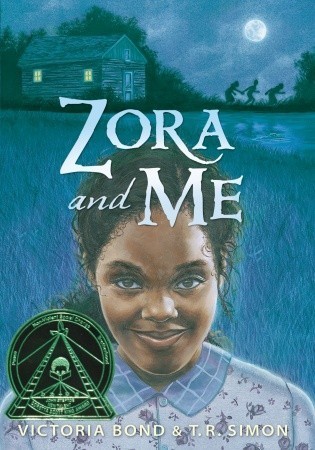
I wanted to interview Tanya McKinnon for this blog for a number of reasons— she’s such an inspiring and generous member of the publishing community; she’s an agent, and the co-author of the acclaimed middle grade novel Zora and Me; she’s both eloquent and realistic on the topic of diversity; and and I wanted to hear more about her course at CCNY where she teaches Writing for Children within the publishing program.
Wendy Lamb: Tanya, you’re an agent, an author, a college instructor, and you have a masters in cultural anthropology. There so much we could talk about. Let’s start with agenting—what kind of books are you looking to represent?
Tanya McKinnon: As an African-American agent with a diverse client list in both children’s and adult books, I am always on the lookout for books that push the envelope of human understanding. Books that honor our multicultural world, regardless of who writes them, are my passion.
WL: Why did you decide to teach Writing for Children in the Publishing Certificate Program at City College?

TM: I love teaching; one of my favorite ways to spend an afternoon is opening students to the wonderful complexity of children’s books. The students at City College have changed over the nine years I’ve been teaching there, but what has stayed constant is their hunger for works by and about people of color. I look for fiction that feels unselfconsciously racially inclusive, such as Aristotle and Dante Discover the Secrets of the Universe by Benjamin Alire Saenz, I Hadn’t Meant to Tell You This by Jacqueline Woodson, and When You Reach Me by Rebecca Stead, just to name the first titles that come to my mind.
I also love teaching because I’m a social introvert and I’m selfish and I like learning things. Every semester my students teach me new things about the books we read and the process of learning to write. I think we all teach to learn.WL: You said that one important focus is: why diversity—why are we so compelled by it?
TM: I have come to believe that we say diversity as a placeholder for more emotionally difficult concepts, like hegemony, invisibility, and hate. The problem of diversity is most often a problem of hate: both the fear of feeling hated by others and the hate we carry inside ourselves—that part of ourselves and our cultures that is most intolerant. We care about diversity because we fear the repercussions of hate.
Po Bronson and Ashley Merryman’s NurtureShock: New Thinking about Childhood, makes it clear that even when parents think they are providing a tolerant and diverse environment for their child, if they don’t talk openly about race and ethnic difference, the child can have racist attitudes by the age of five. Five! That’s so young – it’s an age when well-intentioned parents are still trying to shield their children from the knowledge of hate-driven differences like racism. Yet if we think of hate as the sharpened edge of unexamined stereotype, not talking about it becomes a way of teaching children to take on the negative feelings and assumptions from the culture and – however unarticulated – their own home.According to neurological research, the thing that reduces hate and increases acceptance of diversity is knowledge and rational thought. The more we use our pre-frontal cortex, the seat of rational thought, the more likely we are to reduce hate. That’s why reading about difference, especially at a young age, is so very important. And it’s why racially inclusive children’s books are so crucial for a rational and tolerant society.
WL: I hope some of your students will end up as editors. What must publishers do to attract and retain diverse staff?
TM: For a long time, as you know, careers in publishing and other elite forms of professionalized art were the province of the privileged. I, for instance, graduated from college in the late 80s with an English degree and the desperate desire to live and work with books. I was lucky to have a powerful academic mentor who was also a writer; she introduced me to the world of book editing. My first job in publishing was as an editor at South End Press in Boston. Without that mentor, I may not have found my way to publishing.
Young people from working class backgrounds, and especially young people of color, may never have met a book editor. They may not know the career even exists. This is why exposure is one of the key ingredients in attracting talented young people of color. That, and a salary they can live on!
TM: Now I have a question for you. How do you think reading about “others” effects change?
WL: If a work reaches readers in a true emotional way. Sensitivity toward, and curiosity about, someone who is different from you can begin early in response to strong, well written books.
TM: As an editor, do you think “monitoring” who gets to write about race, and the notion that writers can only write about their own groups, helps or hinders diversity in publishing?
WL: It hinders diversity and creativity. “Monitoring” can intimidate writers so that they don’t feel free to pursue certain topics, or to tell a story from a point of view that is not their own. It can make editors and writers pull back from exploring complex new territory because it’s easier to stick with what you know, and what’s been welcomed in the past.
I tell authors: “You can write anything you can fully imagine. If you write outside your group or your experience you may be criticized. So, prepare for that. But first—write the best book of your life! Research it deeply; consult people from that community, that world. Use an afterword to discuss your research, establish your intentions, and your credentials. Make it clear that this book was created with care, respect, and passion. My colleagues and I will support you all the way.”
I know you also feel it’s important to encourage writers who feel intimidated about writing outside their own ethnicity.
TM: I spend a good portion of every semester getting my students to embrace all the possibilities of empathy and identification that fiction writing allows. In fact, I require them, regardless of whether they identify as writers or not, to write a first chapter and full synopsis for a middle grade novel and a YA novel. I tell them not to worry – that people who love writing but are not themselves writers make great editors, precisely because they understand how relentless the task of self-interrogation must be to produce believable and compelling characters on the page.
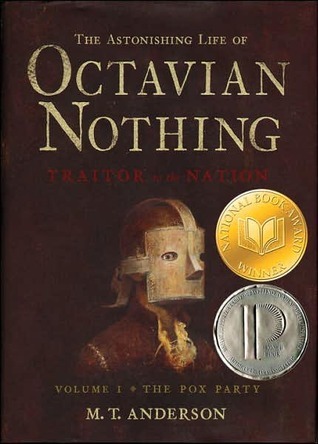
I also teach The Astonishing Life of Octavian Nothing, Traitor to the Nation, by M.T. Anderson. I teach it for many reasons, but one is to show my students that race is no impediment to human understanding. That novel, both volumes, is a masterpiece; no black person could have written it better. It is proof that, even as we desperately need new voices of color, we should never succumb to shallow literary nationalism.
Diversity is such a tricky subject, and it makes everyone so nervous. When my class reads Marc Aronson’s Race: A History Beyond Black and White for our non-fiction section, I tell my students this: “I would much rather you make a mistake with me because you’re trying to break through received ideas of race, class, gender, orientation, nationality, religion, than that you remain quiet and safe and miss the beautiful opportunity of experiencing your full humanity.”
I think that reaches them. My hope is that they always dare to reach each other.
Tanya McKinnon is an agent with McKinnon-McIntyre, a writer, and teaches the Writing for Children in the Publishing Certificate Program at City College. She has a master’s degree in cultural anthropology. Under the name T.R Simon, she wrote Zora and Me with Victoria Bond. This delightful middle grade novel was inspired by the early years of Zora Neal Hurston, and won the John Steptoe New Talent Author Award.
-
ABFFE Holiday Children’s Book Art Auction
About ABFFE:The American Booksellers Foundation for Free Expression is the bookseller’s voice in the fight against censorship. Founded by the American Booksellers Association in 1990, ABFFE’s mission is to promote …
-
‘New York Times’ Notable Children’s Books of 2014
Picture Books Baby Bear. Written and illustrated by Kadir Nelson. (Balzer & Bray/HarperCollins, ages 2 to 6.) The Baby Tree. Written and illustrated by Sophie Blackall. (Nancy Paulsen/Penguin, ages 4 to 8.) …
-
Hogwarts Experience Re-Created in Poland
“The school has done all it can to deliver an authentic wizarding environment, or at least one close to the spirit of J.K. Rowling’s series. It sorts students, for example, …
-
This Holiday Season … Children Ages 6–17 Want Books That ‘Make Me Laugh,’ According to ‘Sneak Peek’ of New National Study
NEW YORK, NY – To help gift givers select the right books for children this holiday season, Scholastic (NASDAQ:SCHL), the global children’s publishing, education and media company, has released new data …
-
Teen Choice Book of the Year: Nominate Your Favorites Now!
Nominate your favorite YA titles of 2014 by noon (EST) on February 2 at Teenreads.com! The 5 titles that get the most votes will become the finalists for the Teen …
-
Cover Revealed For ‘The Favorite’ By Kiera Cass
Both of Cass’ newest Selection novellas, The Queen and The Favorite, will be published in a print book on March 03, 2015. The Heir, the first of two forthcoming full-length …
-
Chris Colfer to Write Several New Children’s Books
“Colfer’s print plans don’t end with this set of stories, however. The actor and author is now also writing a novel for teenagers that tells the story of a young …
-
Hunger Games Salute Used by Black Friday Protesters Fighting for Higher Wages
NEW YORK, NY – While millions of Americans were shopping on Black Friday, protesters across the country were using a symbol of resistance seen in the new Hunger Games movie …
-
Penguin Random House Launches #GiveaBook Campaign
Booksellers and individuals are encouraged to join the effort by creating #GiveaBook challenge videos (naming a book they are giving and why, and challenging three friends to take part) and …
-
Sarah J. Maas to Write a New YA Fantasy Series
“I began writing ACOTAR in spring of 2009 and wrote the first draft in about 5 weeks (in an absolute FRENZY OF INSPIRATIONNN, I might add). Then I let it …
-
Scholastic Announces Plans To Create New Retail Space At 557 Broadway
NEW YORK, NY – Scholastic today announced that it will be adding 7,500 square feet of valuable retail space at 557 Broadway in SoHo. The project, which will begin in the spring, will …
-
Jacqueline Woodson Talks About the Creative Process Behind ‘Brown Girl Dreaming’
Woodson examined the memories as though they were “photographs” and pieced them together to make up a cohesive story. The inspiration behind this book came from the loss of her …
-
ABFFE to Merge with ABA, Expanding Free Speech Programming
NEW YORK, NY — The American Booksellers Foundation for Free Expression (ABFFE) and the American Booksellers Association (ABA) announced today that ABFFE’s operations will be integrated into ABA’s in order …
-
CBC Diversity: Browsing the Bookstore Shelves
Contributed to CBC Diversity by Karen English
When I was in the sixth grade I decided to write a novel. I’d been writing stories since I was seven. My mother called them “The Miss Flouncy Stories.” In this book my main character was a girl—my age—who suddenly had to move from the city to the country. I’d only lived in the city so it was difficult to create a setting for something I’d never experienced. But I labored on.
Soon I found I had a more pressing problem: what to do about the race of my main character? I was a big reader and lover of books yet I’d never seen a black character in any of the books I’d read—except The Story of Little Black Sambo. To the publishing world I didn’t exist. I had no story or life worth reflecting in books. White was the norm—the standard.
I decided to make my character colored (the accepted term for African Americans at that time) but I gave her blond hair and blue eyes. A girl at my school, who was a year behind me, happened to have long blond hair and green eyes—and she was colored. Problem solved.
Though much has changed, white is still the norm. Everyone else is “other.” Youth of color can now find themselves in books, but they’re still under-represented or often misrepresented.
While publishers have made progress in addressing the need for diversity in children’s literature, two problems have emerged. The first is the limits of stereotyping, especially in young adult and middle grade novels with African American characters. Too often the protagonist lives in the circumscribed world of the ghetto, gang life, teen pregnancy, drugged out or absentee parents. Even though these themes do not reflect the lives of the majority of American black youth, lists of young adult fiction with black characters on Goodreads and other online sources include too many titles along these lines. What happens when black youth see this as their narrative? What is the message conveyed?
The second problem is that progress in publishing is undermined by bookstores where the bottom line drives promotion and in-store availability. Though children of color can now find themselves in books, they’re still under-represented. Nothing shows this more than a trip to the bookstore.
A recent visit to Barnes and Noble revealed a dismal state of affairs. There were no “must-read” books with characters of color in the Must Read section. Nothing in the Staff Recommends section, as well, even though store personnel make those selections.
I spoke to one sales clerk and was told corporate was in charge of the table displays and displays by the register, but store employees were free to decide which books would be turned face-out on the shelves.
The Teen section appeared one hundred percent white.
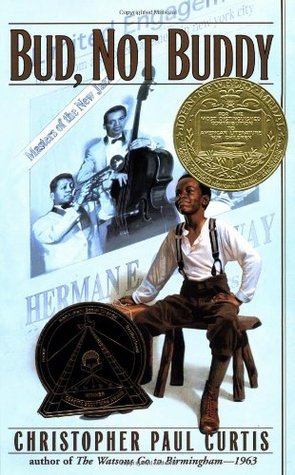 In Young Readers, eight bookshelves were packed with books, but only two books were face-out on the shelf with characters of color: Bud Not Buddy by Christopher Paul Curtis and Esperanza Rising by Pam Munoz Ryan—both award winning books. (On my second trip to that particular Barnes and Noble, Bud, Not Buddy was no longer face-out. Only the spine was visible.)
In Young Readers, eight bookshelves were packed with books, but only two books were face-out on the shelf with characters of color: Bud Not Buddy by Christopher Paul Curtis and Esperanza Rising by Pam Munoz Ryan—both award winning books. (On my second trip to that particular Barnes and Noble, Bud, Not Buddy was no longer face-out. Only the spine was visible.) Early Readers and Chapter Books? Forget it. Even in the Super Hero section I saw not one super hero of color.
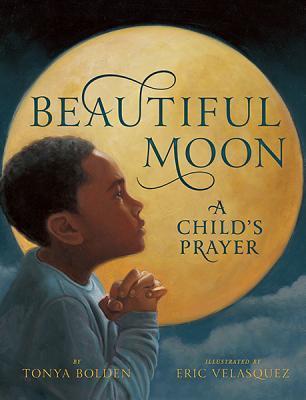 I saw only one book with a character of color in the Picture Books section—Beautiful Moon by Tonya Bolden. The animal world and the white world, however, were amply represented. In the Little Books for Little Hands area, there were only two books in which a child of color could see himself or herself.
I saw only one book with a character of color in the Picture Books section—Beautiful Moon by Tonya Bolden. The animal world and the white world, however, were amply represented. In the Little Books for Little Hands area, there were only two books in which a child of color could see himself or herself.In American History I did find 6 biographies facing out that were about people of color. The subjects of these stories included Rosa Parks, Muhammad Ali, Martin Luther King, Bruce Lee, Roberto Clemente, and Jackie Robinson.
What does all of this say to a child of color on a trip to the bookstore when he finds himself surrounded by books in which he has no presence? When he is consigned to relate to the world and experience the range of human emotions that literature provides almost always through the experiences of white characters? That child understands that white is the standard (fixed, traditional, prevailing). The subtle yet insidious message may be sugar coated, but it does its damage. He begins to see himself as less than, irrelevant…other.
Wouldn’t it be nice if publishers and bookstores fully acted on the importance of all children seeing themselves in books—beyond token representation? More and more, children are coming into contact with those who don’t look like them, eat like them, nor celebrate the same holidays. Exposing our youth to literature that reflects this increasing diversity builds respect for others and opens minds to a world far different from the world I grew up in where I had to give my colored protagonist blond hair and blue eyes.

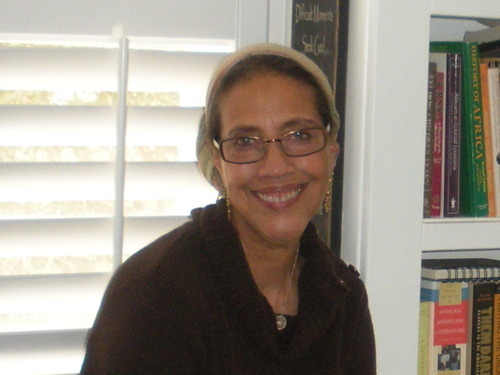 Karen English is a retired elementary school teacher and author who is no stranger to literary awards and recognition. Karen was the 1999 recipient of the Coretta Scott King Honor Award for Francie, the 2005 recipient of the Jane Addams Children’s Book Award, and the 2005 ALA Notable Children’s Book Award for Hot Day on Abbott Avenue. Two of Karen’s books, Big Wind Coming! and Speak English for Us, Marisol!, have been featured by the Anti-Defamation League as recommended multicultural and anti-bias books for children. She lives in Los Angeles, California.
Karen English is a retired elementary school teacher and author who is no stranger to literary awards and recognition. Karen was the 1999 recipient of the Coretta Scott King Honor Award for Francie, the 2005 recipient of the Jane Addams Children’s Book Award, and the 2005 ALA Notable Children’s Book Award for Hot Day on Abbott Avenue. Two of Karen’s books, Big Wind Coming! and Speak English for Us, Marisol!, have been featured by the Anti-Defamation League as recommended multicultural and anti-bias books for children. She lives in Los Angeles, California. -
#MyHungerGames Exposes the Realities Of Income Inequality By Hacking the Hunger Games Narrative
Earlier this week the Harry Potter Alliance launched a hashtag meant to bridge the gap between the Hunger Games: Mockingjay, Part 1 marketing and the series’ resonance with human stories. …





















